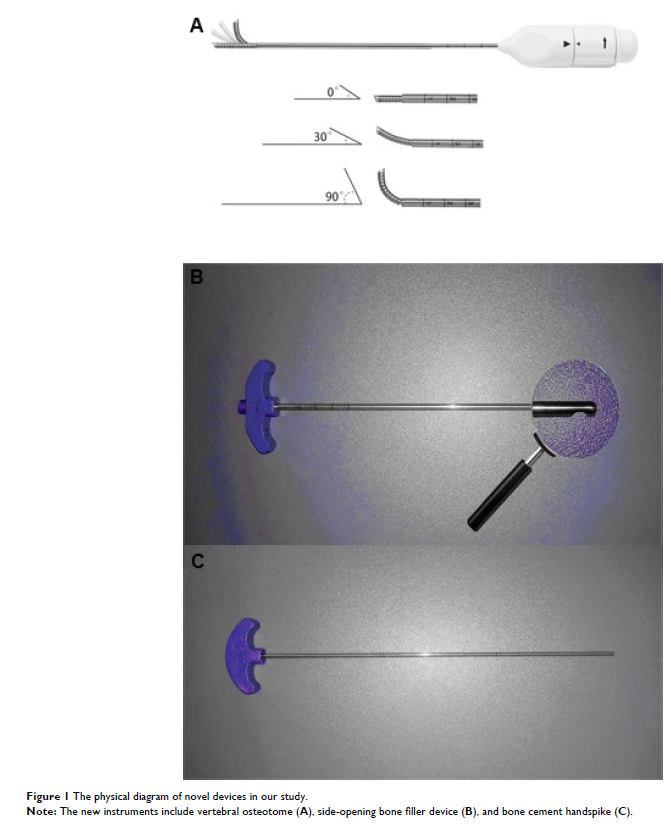108605
论文已发表
注册即可获取德孚的最新动态
IF 收录期刊
- 3.4 Breast Cancer (Dove Med Press)
- 3.2 Clin Epidemiol
- 2.6 Cancer Manag Res
- 2.9 Infect Drug Resist
- 3.7 Clin Interv Aging
- 5.1 Drug Des Dev Ther
- 3.1 Int J Chronic Obstr
- 6.6 Int J Nanomed
- 2.6 Int J Women's Health
- 2.9 Neuropsych Dis Treat
- 2.8 OncoTargets Ther
- 2.0 Patient Prefer Adher
- 2.2 Ther Clin Risk Manag
- 2.5 J Pain Res
- 3.0 Diabet Metab Synd Ob
- 3.2 Psychol Res Behav Ma
- 3.4 Nat Sci Sleep
- 1.8 Pharmgenomics Pers Med
- 2.0 Risk Manag Healthc Policy
- 4.1 J Inflamm Res
- 2.0 Int J Gen Med
- 3.4 J Hepatocell Carcinoma
- 3.0 J Asthma Allergy
- 2.2 Clin Cosmet Investig Dermatol
- 2.4 J Multidiscip Healthc

一种创新的技术治疗骨质疏松性椎体压缩性骨折 - 带侧开套管的椎体骨凿
Authors He X, Liu Y, Zhang J, Jia S, Meng Y, Huang Y, Wu Q, Hao D
Received 23 March 2018
Accepted for publication 3 July 2018
Published 18 September 2018 Volume 2018:11 Pages 1905—1913
DOI https://doi.org/10.2147/JPR.S169123
Checked for plagiarism Yes
Review by Single-blind
Peer reviewers approved by Dr Colin Mak
Peer reviewer comments 2
Editor who approved publication: Dr E Alfonso Romero-Sandoval
Objective: This study is to assess an innovative technique – a vertebral
osteotome (VO) combined with side-opening injection cannula for
percutaneous vertebroplasty (PVP).
Methods: A retrospective study by propensity score matching. From January
2016 to April 2016, 63 patients who were diagnosed with monosegmental
osteoporotic vertebral compression fracture received the innovative technique.
The epidemiologic data, surgical indexes, and recovery outcomes were collected
in the follow-up period. Propensity score matching identified 63 pairs form
historical controls by traditional unilateral PVP approach in 2015 using six independent
variables: age, sex, preoperative visual analog score (VAS), Oswestry
Disability Index (ODI), body mass index, and bone mineral density.
Results: The surgical duration and cement distribution were longer and
larger in patients by VO method. Besides, postoperative VAS and ODI in the VO
group were lower than those in the control group. However, there were no
differences in radiation exposure times, improvement of Cobb angle, cement
leakage, or adjacent vertebral fracture between two groups. Cement volume in
the VO group was less than that in the control group.
Conclusion: This new innovative technique makes PVP safe and effective.
Although it lasts longer, the restoration rate of vertebral height and cement
distribution can be improved, which contributes to a better pain relief.
Keywords: technique, percutaneous vertebroplasty, vertebral osteotome,
osteoporotic vertebral compression fracture, side-opening injection cannula
